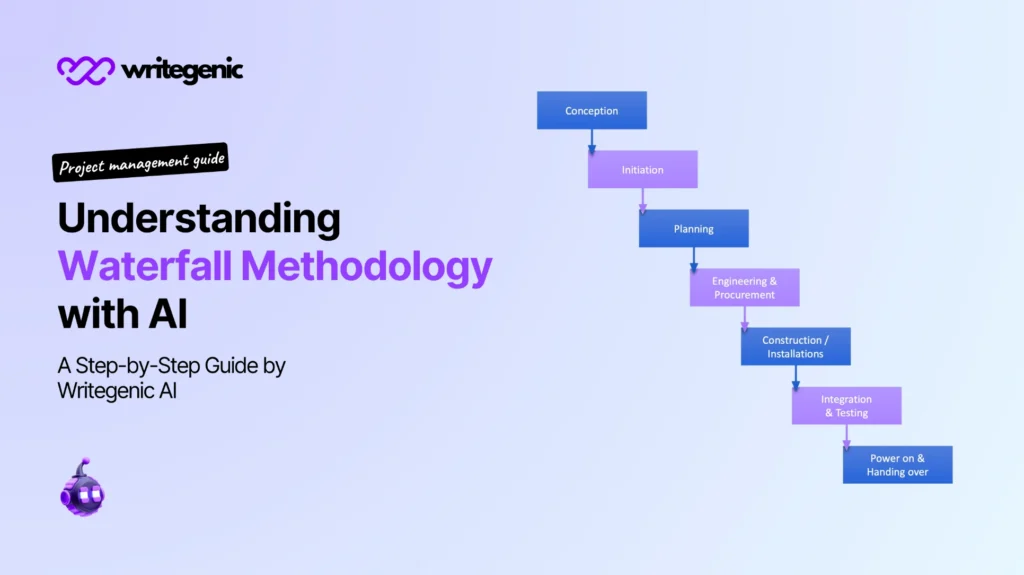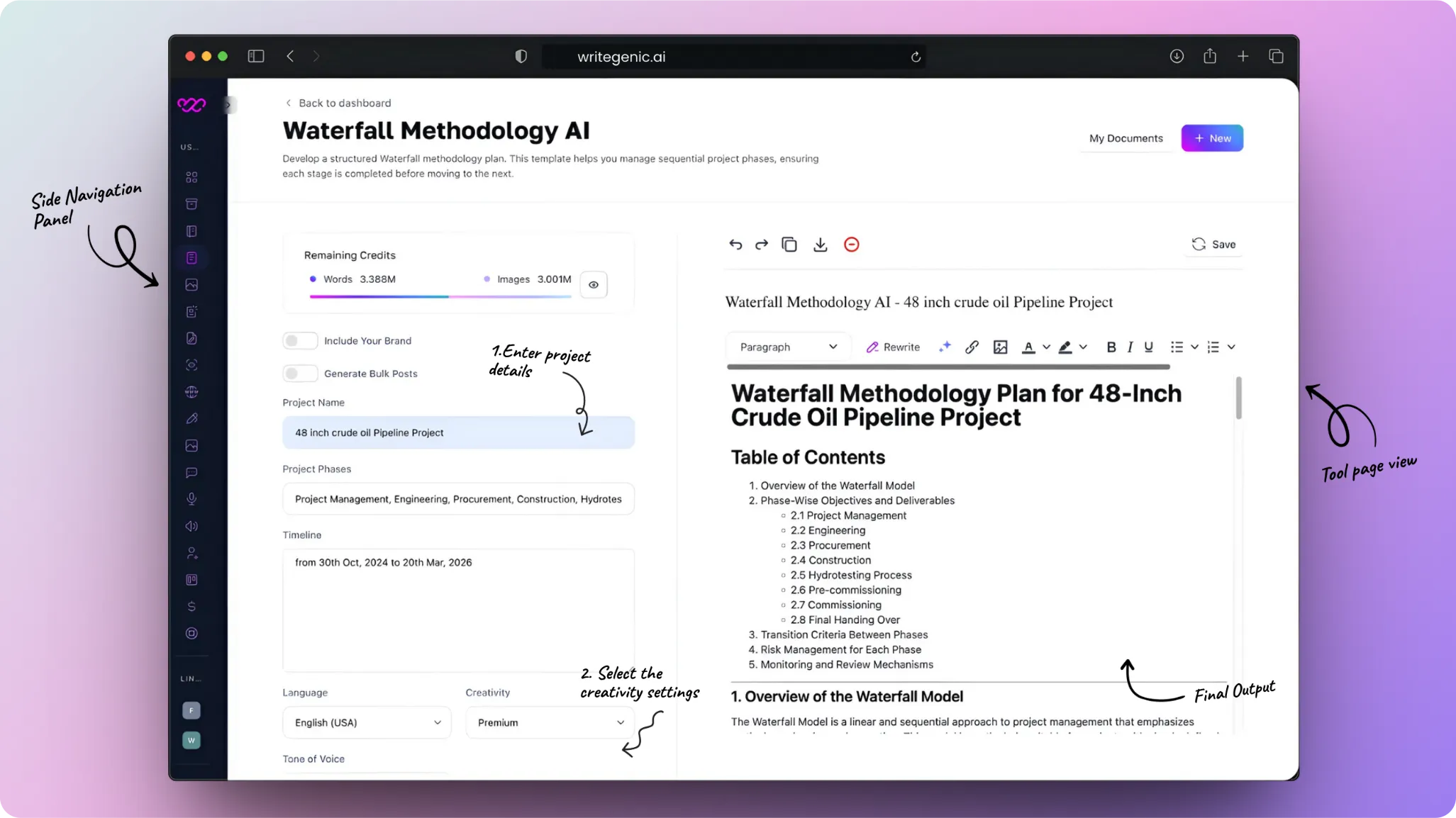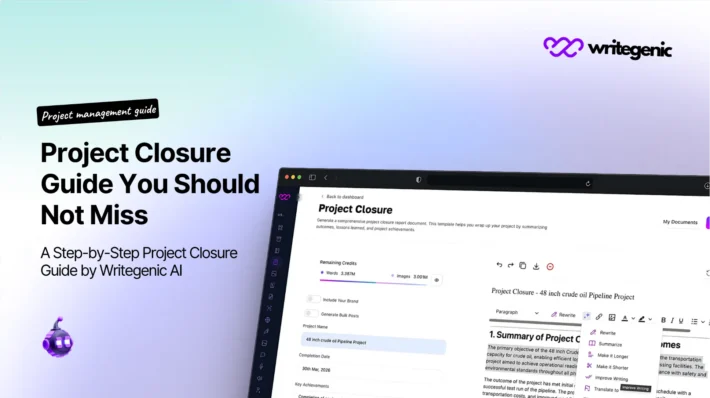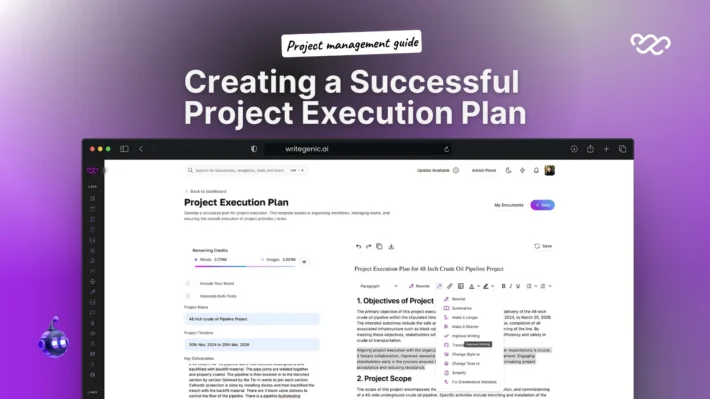Understanding Waterfall Methodology with AI: A Step-by-Step Guide

Waterfall Methodology AI provides clarity, control, and clear deliverables as a step-by-step methodology to manage artificial intelligence projects. In the modern and fast moving world of technology, the incorporation of AI into the business procedures requires foreseeable implementation and planned discipline. A structured one is the Waterfall process itself a linear process, which is excellent when requirements are fixed.
Here in the guide, we will analyze how the Waterfall methodology in project management can be used in an AI project, and watch through its flow and structure and discuss its pros and cons. If you want to build an AI-powered solution or coordinate a team of data scientists, this guide will assist you in making the right decision about Waterfall.
Table of Contents
What Is the Waterfall Methodology with AI?
The Waterfall Methodology with AI is a sequential model of project management and with this approach work moves in one direction, project-like a waterfall, along the various project life stages including gathering requirements, designing systems, implementing, testing, deploying and maintaining all with the power of AI.
Waterfall gives a strict framework when used in AI projects to develop AI-based systems and models. It is Perfectly suitable in projects which require fixed requirements and can have minimal changes in each stage as they will have to complete each stage before proceeding to the other.
In contrast to Agile, which is fast, modular, and adaptive, Waterfall is based on intensive planning, exhaustive documentation, and restrictions on client input after the actual development has begun.
Waterfall Flow: How the Process Works
The Waterfall flow involves a series of clearly defined stages. Each phase serves as the foundation for the next:
Phases of Waterfall Flow in AI Projects
Requirement Gathering
The requirements of the systems and AI are defined by stakeholders. To give a few examples, it is to specify which data will be employed, which ML algorithms are needed, or what results can be expected.
System Design
The technical blueprint is created by architects – model architectures, data pipelines, infrastructure and training environments.
Implementation
Based on the detailed designs and specifications, the developers and data scientists will begin the process of coding and construction of the AI model.
Testing
The AI is examined carefully in terms of accuracy, functioning, and requirement adherence. Bugs or defects are noted down and rectified.
Deployment
The model or the system under test is transferred to manufacturing. Under the contract, the working system is delivered to the client.
Maintenance
Problems which are identified by post deployment are fixed. Maintenance involves monitoring performance, patching bugs or re-training models on new data.
This well-planned waterfall flow makes sure that each phase is not miss-stepped over and risks eliminated by proper planning.
Understanding the Waterfall Structure
The waterfall system is as simple as constructing a house, you cannot mount the windows before putting the foundation. All the things are conditional to the preceding one.
They are well defined phases with sign-offs and deliverables. After a phase is closed it is deemed to be locked and any modification expensive.
Typical Deliverables in an AI Waterfall Project:
| Phase | Deliverable |
| Requirement Gathering | Functional Requirement Document (FRD) |
| Design | Technical Design Document (TDD), Model Blueprint |
| Implementation | Codebase, Trained Models |
| Testing | Test Reports, Confusion Matrix, Model Validation |
| Deployment | Production-ready system, Logs, User Guides |
| Maintenance | Monitoring Reports, Patch Logs |
This structure is highly effective for managing large teams, outsourced development, or enterprise-grade AI systems.
Describe a Waterfall Methodology AI Example in Projects
So, an example of a waterfall in action:
Consider a healthcare company that has an AI made to predict the risk scores of a patient by analyzing the past medical history records.
- During requirements, the project team describes all the input variables (e.g, age, blood pressure, lab results) and sources of data, and type of output prediction is desired.
- In the design stage, they specify the model (e.g. logistic regression), preprocessing procedures, and validation plan.
- The model can be implemented by training and fitting a model to the historic data of patients.
- Testing ensures the correctness, equity, and uniformity of the model through demographics.
- The solution is implemented in hospitals.
- Post deployment maintenance consists of re-training the model after each 6 months and handling edge cases.
This method is very effective when there are all known variables in advance that are not changed during the project.
Waterfall Method Advantages and Disadvantages
It is important to know about the Waterfall Methodology AI advantages and disadvantages before selecting the model to develop AI.
| Advantages | Disadvantages |
Defined phases and timelines make planning and resource allocation straightforward. | Hard to adapt when new data insights or requirements arise mid-project. |
Ideal for regulatory compliance, with clear records at each phase. | Problems are often identified only during testing, leading to costly fixes. |
Team members know exactly what’s expected in each stage. | Minimal feedback loop after planning can result in misaligned outcomes. |
Strong upfront planning reduces the need for changes later. | Not suitable for AI models that need constant tuning and experimentation. |
When to Use Waterfall Methodology in AI Projects
Waterfall isn’t dead — it just needs the right project.
Use Waterfall in AI projects when:
- Requirements are fully known and unlikely to change.
- You’re building a regulatory or contract-driven solution.
- Your AI model is rule-based or not dependent on iterative experimentation.
- The client demands full documentation and milestone-based delivery.
Avoid Waterfall if:
- Your project requires continuous learning and model optimization.
- Data availability and quality may change mid-project.
- Client feedback and iteration are vital for success.
How to Create a Perfect Waterfall Methodology Using Writegenic AI?
To get rid of all the stress of manually creating a Waterfall Methodology, we have solved this problem of creating a waterfall methodology with the help of specially trained Writegenic AI.
You can now create a perfect waterfall methodology in minutes using this tool. Just enter project details, or toggle your brand voice (Project-specific), click a generate button, and you have your perfect Waterfall Methodology ready in minutes just like a magic.

Conclusion
Waterfall Methodology AI will add structure, discipline and predictability to your AI development process only when used on the correct kind of project.
Once you are aware of how the waterfall flow works, understand its structure, and are privy to the merits and drawbacks of this approach, you can come up with informed choices that can translate to successful AI implementations.
Waterfall may be the ideal choice in case your AI project has clear requirements, quality-guaranteed data, and a certain range. Otherwise, hybrid/Agile variants well-suitable in the changing models and changing feedback are to be considered.
FAQs about Waterfall Methodology AI
Is Waterfall Methodology AI suitable for modern AI projects?
The Waterfall Methodology AI is most suitable when the requirements are known at the outset i.e. when the requirements are fixed e.g. when the project is a compliance or a government AI project. Yet, it is possibly unsuitable in applications where one has to regularly update machine learning models, conduct experimental or iterative work on them.
How does Waterfall Methodology AI differ from Agile in AI development?
In comparison to Agile, which embraces iterative development and feedback, the Waterfall Methodology AI has a linear direction. It implies less flexibility and a greater control-which makes it the perfect fit in AI projects where precision, documentation and predictability are the priorities.
What are the key phases in Waterfall Methodology AI?
The most important stages of the Waterfall Methodology AI are requirement collection, the designing of the system, its implementation, testing, deployment, and maintenance. All the stages are done sequentially and in this way, there will be a clocked application of development effort.
How to create a Waterfall Methodology using Writegenic AI?
Step 1: Open the template from Writegenic AI’s dashboard under the “AI writer” section.
Step 2: Enter your project details.
Step 3: Select creativity levels, and click “Generate”.
In 3 easy steps, your perfect waterfall methodology is generated in minutes.


